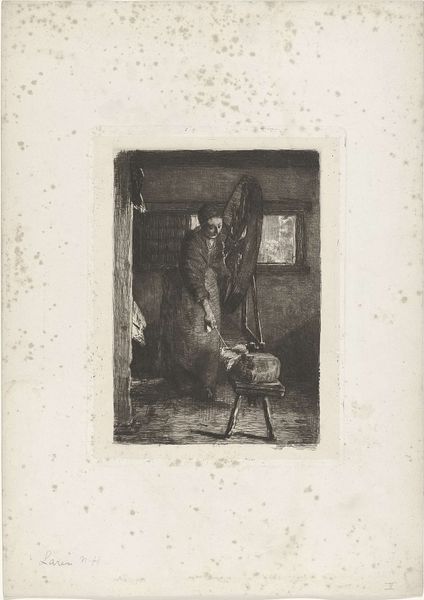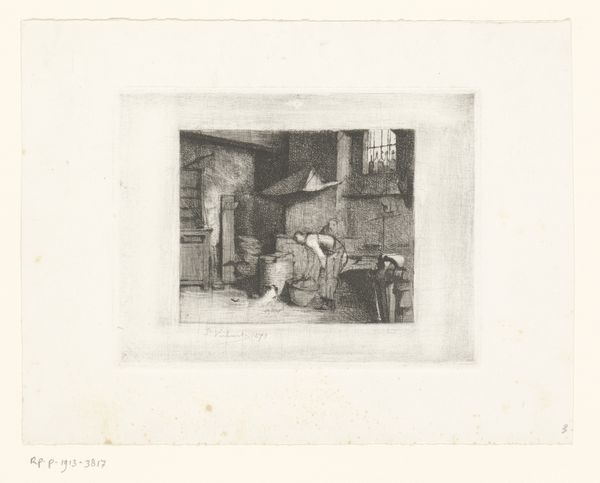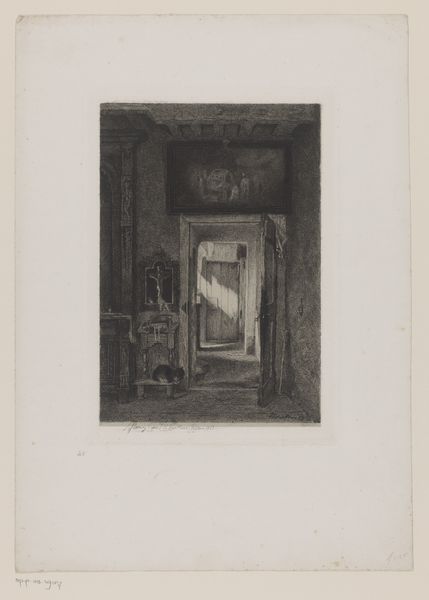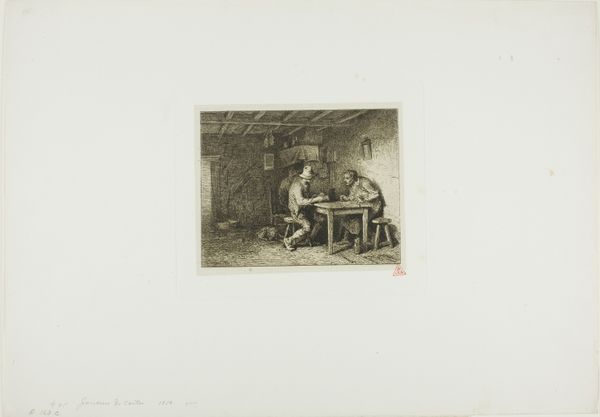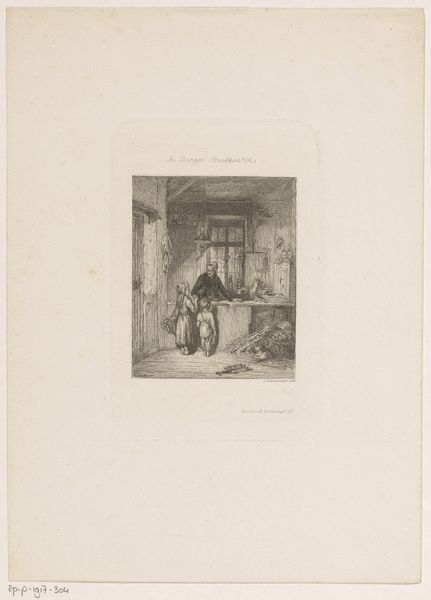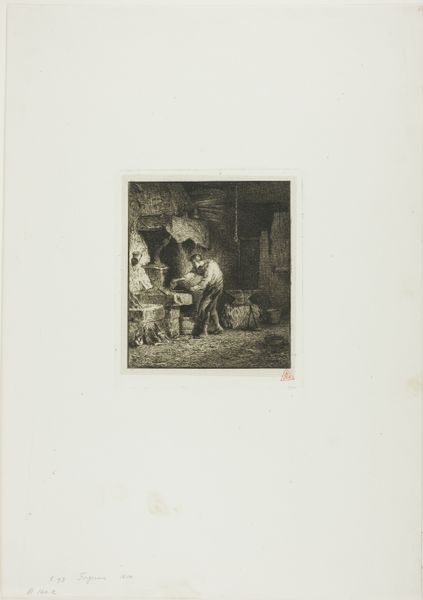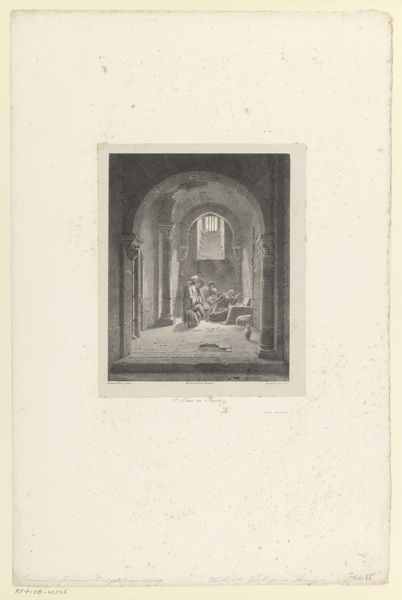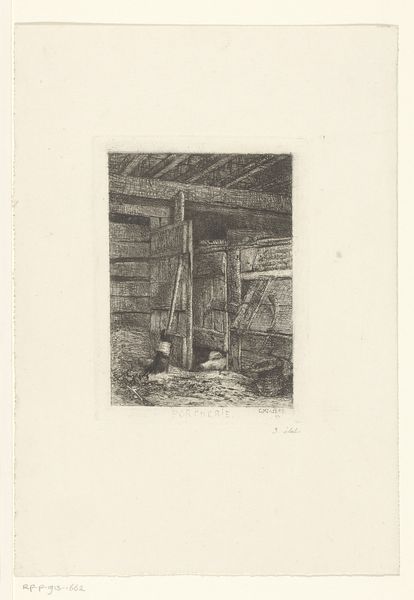
print, etching
#
aged paper
#
toned paper
# print
#
etching
#
genre-painting
#
realism
Dimensions: 5 x 4 in. (12.7 x 10.16 cm) (plate)9 1/8 x 7 1/8 in. (23.18 x 18.1 cm) (sheet)
Copyright: No Copyright - United States
Editor: This is Bror Julius Olsson Nordfeldt's "Coppersmith," made in 1916. It’s an etching, and there's a remarkable sense of enclosed space in this intimate interior scene. What’s your take on it? Curator: What interests me most is how Nordfeldt presents labor. Etchings like this often romanticize pre-industrial crafts, creating a nostalgic vision of work before mass production, but what statement might he be making about artistic production? Editor: That's an interesting point. How does presenting craftspeople as subjects affect the consumption of art in this period? Is there some connection with, for instance, socialist values? Curator: Absolutely! Consider the Arts and Crafts movement. Nordfeldt might be subtly aligning artistic labor with other forms of skilled work, elevating its status within a changing society. Also, remember who can *afford* art. He sold work to patrons and institutions whose politics ran the spectrum of his moment in history. Can one image make these sorts of sweeping gestures that apply to everybody? Or does it subtly shift perception in specific cultural ecosystems? Editor: So, even while romanticizing a simpler time, these images potentially negotiate the role of the artist within contemporary social structures. That's definitely something I hadn't considered. Curator: Exactly. The art market creates narratives around creation as well as creativity; the images become actors. These works are visual arguments participating in a broader cultural discourse about value, work, and identity. Editor: It’s really helpful to think of it that way—art as actively participating in these social arguments. I will try to use that going forward. Curator: That's my aim! Understanding art is never simply admiring its aesthetic qualities.
Comments
No comments
Be the first to comment and join the conversation on the ultimate creative platform.

